Buyer’s guide: aerators – choosing the best aeration equipment for your sports turf
Great sports start with great turf. So choosing the right aeration equipment is a key part of proper turf maintenance and achieving ideal playing conditions underfoot.
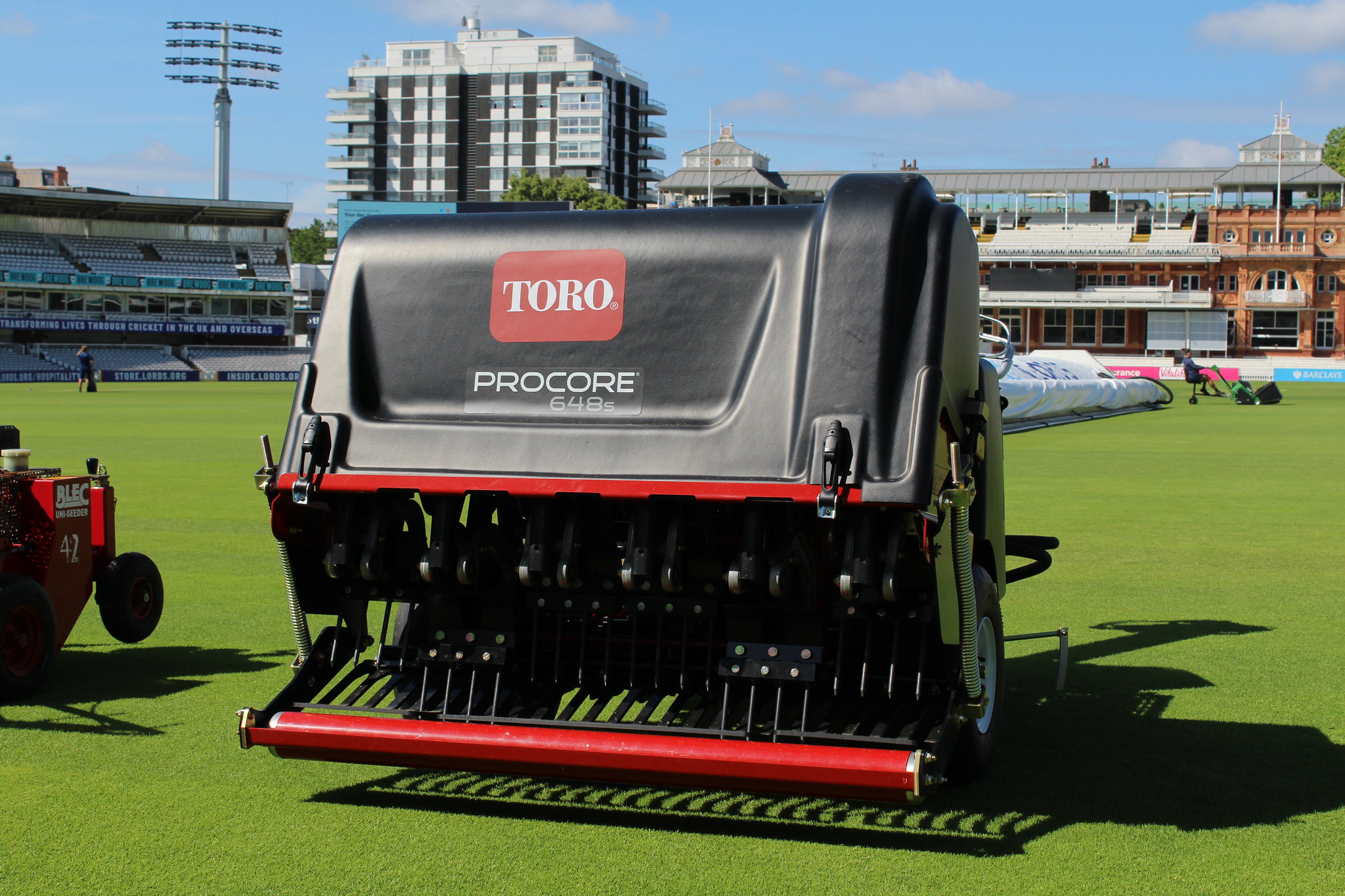
Toro ProCore 648s at Lord’s Cricket Ground
We’ve used our wealth of expertise and years of experience assisting turfcare professionals to simplify the process of deciding which aerator is best for you.
In this buyer’s guide, we’ll unpack how to determine your turfcare needs, which features match those needs, and the different types of aerators on the market.
What is aeration?
Aeration improves circulation of air, water, and minerals within the soil by punching holes into the turf or removing plugs of earth. Choosing the right aerator for the job requires you to understand your venue’s turfcare needs – and how aeration can benefit your unique situation.
When should you do it?
The ideal time for aeration is in the spring or autumn, avoiding times of the year when the soil is very dry or overly moist and can be damaged more easily.
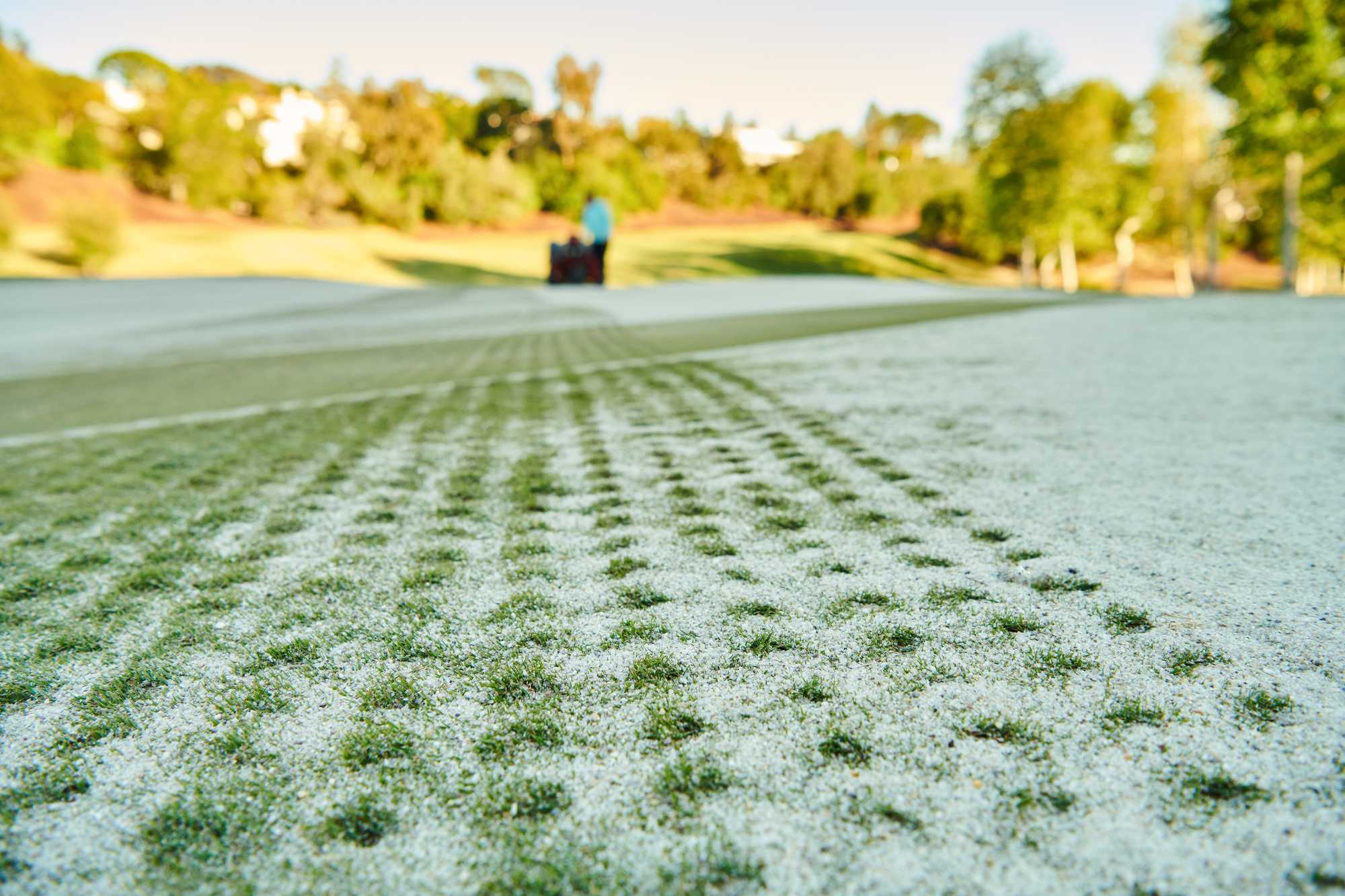
In spring, the grass is actively growing and can fill in the holes from aeration, while come autumn, the soil can be compacted from the summer, especially in golf with the increased footfall during peak season.
Why is aeration important?
Aeration has a wide range of benefits for keeping turf healthy and minimising issues such as run-off and turf diseases.
Benefits include:
- Improving air exchange: Aeration helps oxygen reach the roots, which makes them stronger and supports growth.
- Decompacting the soil and breaking down thatch: Compacted soil and a thick layer of thatch stops the turf from getting the nutrients it needs to grow – aeration can tackle this issue.
- Making the roots healthier: Aeration allows the fibrous root system to develop, helping the grass plant cope with extreme weather conditions.
- Increasing drought resilience: The turf can more easily absorb water once aerated, leading to fewer problems with run-off, where excess water flows over your turf due to poor drainage.
- Helping with pest control: Healthier roots are just that – healthy, and better equipped to withstand pests and diseases.
- Prepping the ground: Aeration acts as the foundation for other turfcare practices such as topdressing.
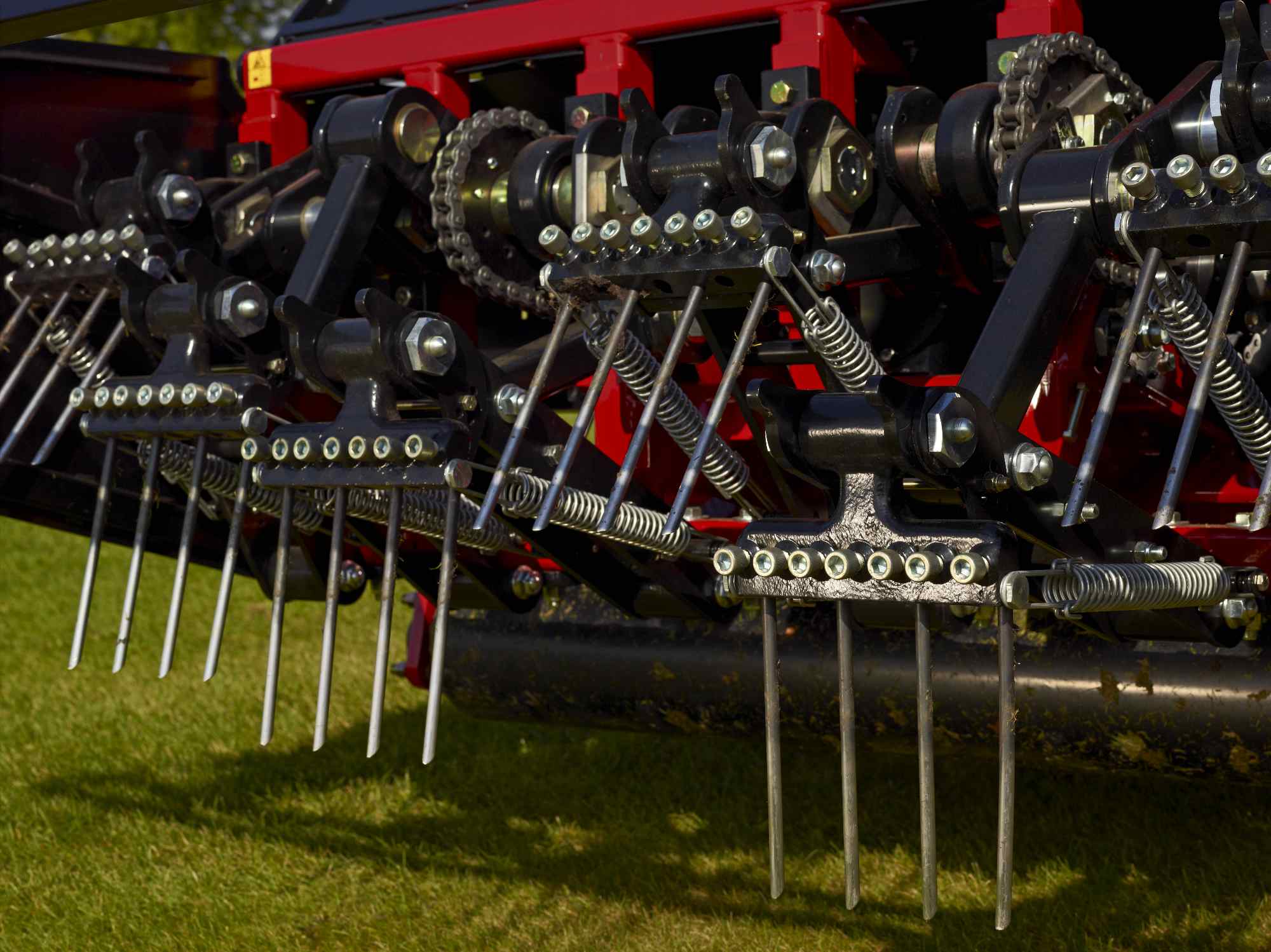
Toro tines
Interested in finding out more about aeration’s role in turfcare? Read more in our article on the compelling benefits of aeration.
Key turfcare considerations before aeration
1. Soil type
One important consideration is the type of surface. Different soils have different compaction tendencies, drainage profiles and oxygen exchange capacities – all of which affect root development in golf courses and other sports venues.
Heavier soils, for example, clay-based root zones, are prone to compaction and poor drainage. These areas often require more aggressive, deep-tine aeration to relieve compaction, improve infiltration and restore oxygen movement to the root zone.
Sand-based or well-drained root zones may still benefit from aeration, but typically need less invasive methods such as solid-tine aeration or venting, which promote gas exchange and water penetration without disturbing turf surfaces too much.
2. Root-zone needs
Root-zone needs dictate the turf maintenance required. For instance, poorly aggregated soil is more likely to be compacted, and will need different support to grass with a thick layer of thatch and robust roots.
Soil aggregates are particles bound together by organic matter, grass roots, micro-organisms, and mineral cements. These particles provide more surface area for water and minerals to stick to, and to stick to each other, boosting root penetration, water infiltration, and soil fertility.
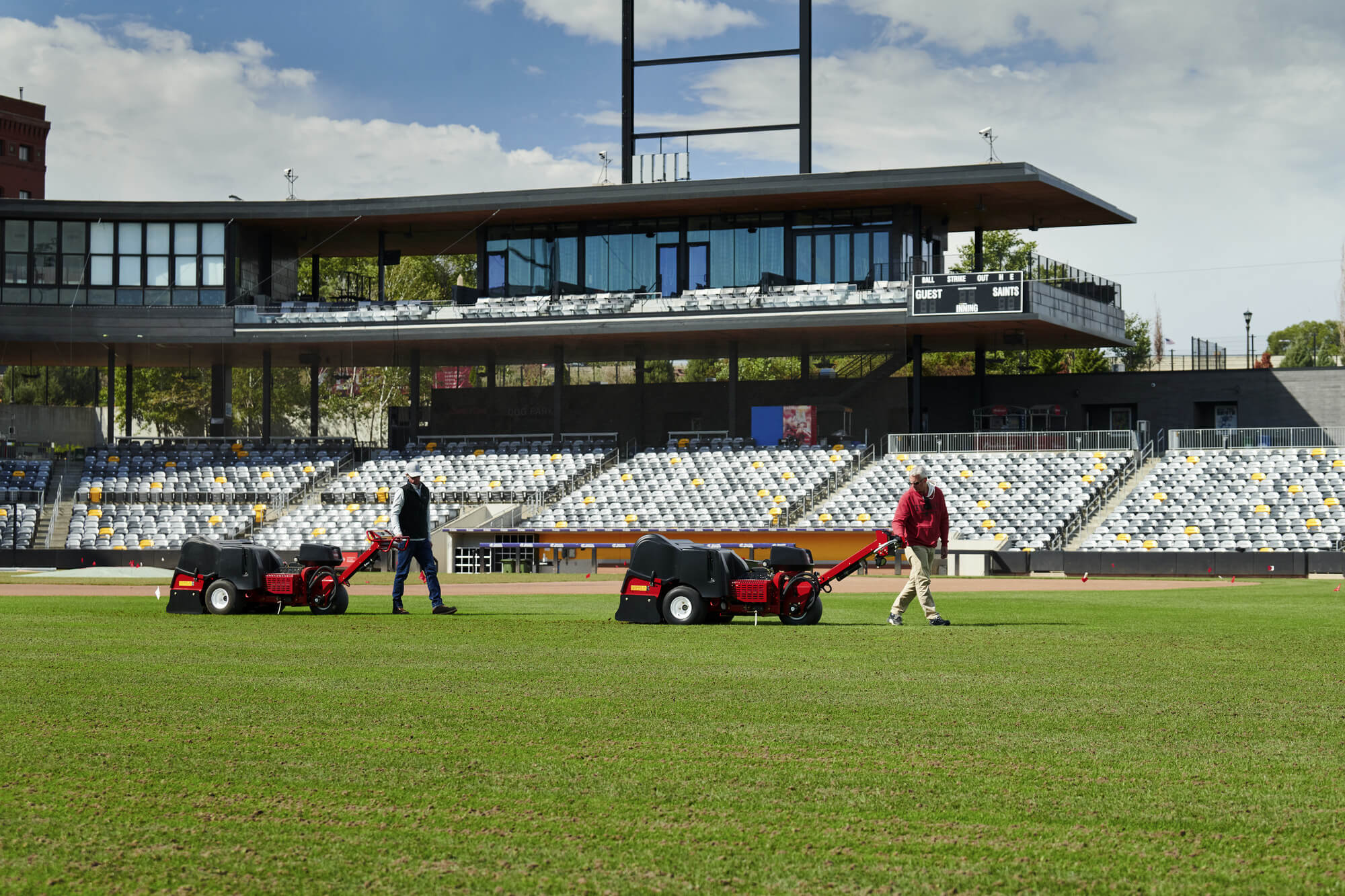
A lack of these aggregates means the roots can’t get the nutrition and air they need to survive. Hollow-tine aeration allows easier access to them, and minimises fertiliser runoff and waterlogging caused by poor drainage.
Conducting a thorough assessment of the grounds, course, or pitch will help inform the aeration equipment you buy.
3. Soil compaction levels
Soil becomes compacted as people or machines cross the grass, pressing the particles closer together. If you’re hosting a sports tournament or event with high footfall, levels of compacted soil will be even higher.
Surface compaction squeezes the space between particles, decreasing the room for aggregates that are essential for high fertility. Deep aeration helps overcome this by creating small holes that improve drainage – but this requires thoughtful planning to avoid weakening the soil.
Discover more in our article on maintaining lush, healthy turf.
4. Scope of your aeration initiative
Inevitably, the scope of the surface being aerated will impact what equipment you need. Mapping the landscape and identifying potential challenges, such as obstacles, corners, and peaks and troughs, will streamline the turf maintenance process.
For smaller pitches and stadia, a pedestrian aerator could well be better suited, allowing you to aerate the space without the need for extra machinery.
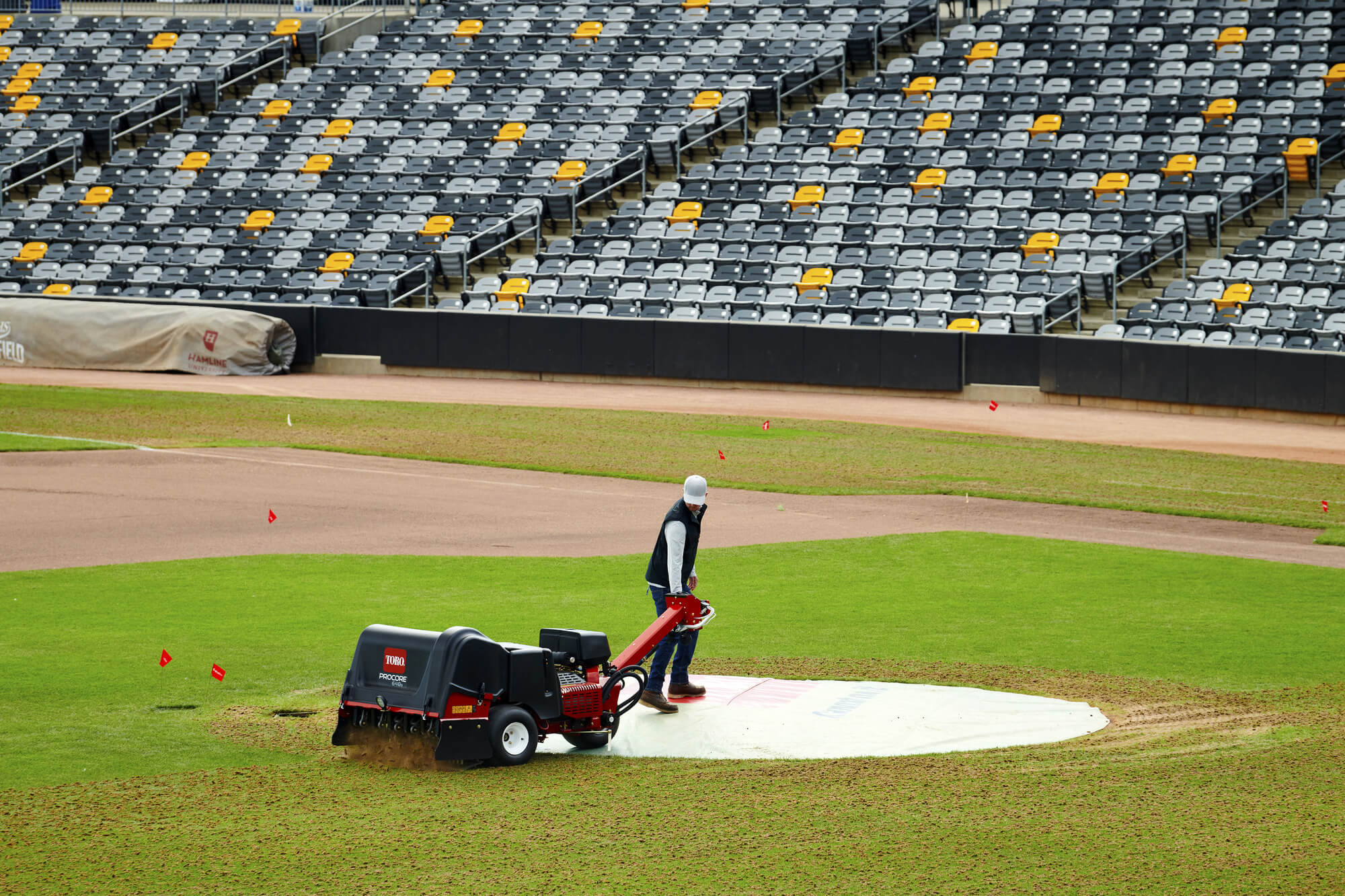
Toro ProCore 648s
On the other hand, tractor aerators are ideal for larger areas like golf courses and training grounds. These work quickly over larger areas.
Aerator features to consider
Having worked out what you need from an aerator, you’ll want to research the features that align with those needs.
- Maximum aeration depth: A higher maximum working depth will increase the level of penetration into the ground, creating deeper root systems. Aeration machines with a higher aeration depth help the turf stay resilient during periods of temperature changes, or extreme rain or drought, which is key for getting the best turf and, therefore, the best sports performance in all weather.
- Aeration width: When maintaining large areas, having the right equipment saves valuable time and resources. Wider working widths improve productivity but are harder to manoeuvre, so it might be worth considering the scope of the turf to figure out whether a larger width is necessary.
- Configurable tine spacing: Multiple spacing options are incredibly useful, allowing you to optimise the aeration pattern, depending on your root-zone needs and the type of terrain. Toro RotaLink™ geometry also ensures the tines remain vertical, cutting precise holes rather than tearing through turf. This precision is key to shortening recovery time, ensuring a quick return to play.
Types of tines: There are two main types: hollow, which works by extracting small cores of turf and is ideal for tackling heavy compaction; and solid, which pierces the soil and is better suited to mild levels of thatch and compaction. There are pros and cons to both – for instance, hollow tines lead to more turf stress and longer recovery times, whereas solid tines are more delicate on the turf and less damaging, but are less effective for breaking down thatch.
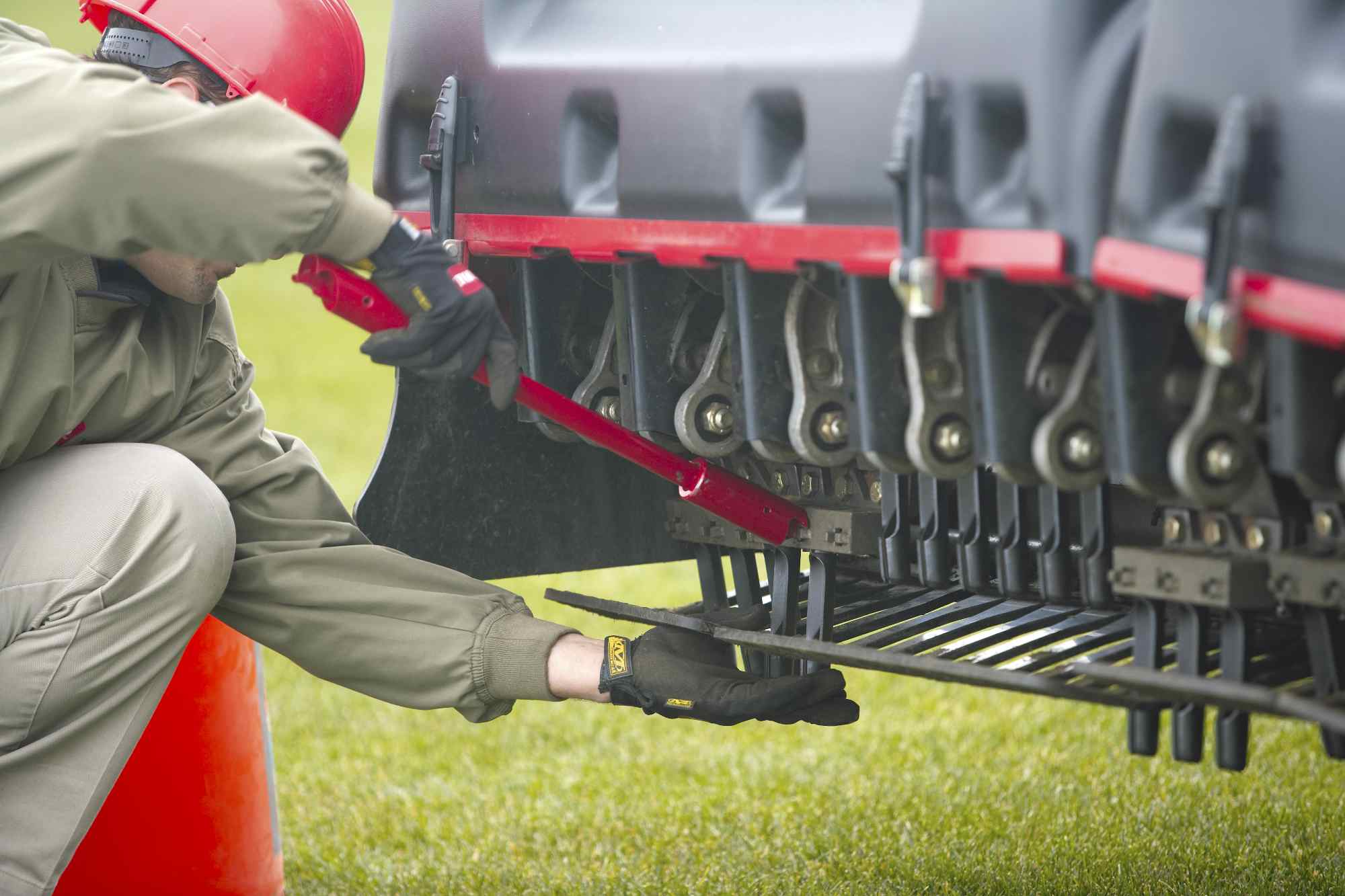
Toro tines
And when it comes to tines, few can match Toro’s innovation and performance. Reesink supplies over 150 Toro tines, delivering unique benefits such as high durability, leading to fewer repairs needed from tines breaking, and high-quality holes produced, causing less turf damage for better aeration results.
Learn more about the uses of tines in the aeration process in our comprehensive guide.
Types of sports and golf course aerators
Pedestrian aerators
Designed for ease of use, with a lightweight design, pedestrian aerators are perfect for small sports pitches and golf greens, allowing a speedy return to play.
Toro ProCore 648s
The customer favourite, Toro ProCore 648s is a fantastic choice for pedestrian aeration. It has incredible productivity, aerating up to 18 greens in seven hours, with a maximum aeration depth of four inches. The revised controls allow easy operation, with improved ergonomics and the option for single-handed operation.
Plus, for those greens or pitches with sharp corners, the ProCore 648s has a tighter turning radius, making it easier to manoeuvre around obstacles or change direction.
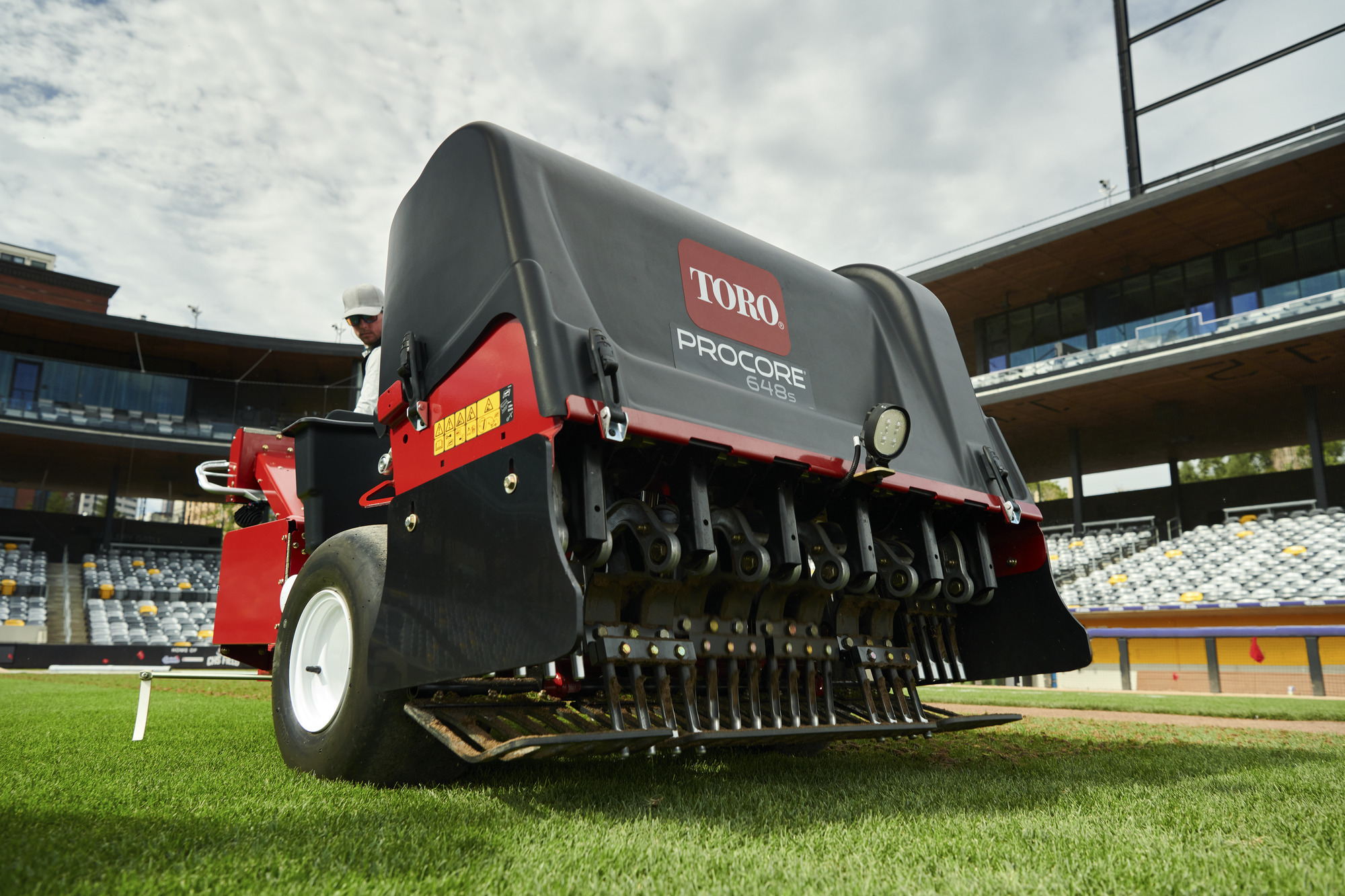
Toro ProCore 648s
Tractor aerators
The ideal solution for golf fairways and larger football club grounds, tractor aerators come in a range of sizes, getting the work done more quickly and lowering operational fatigue.
As golf course aerators, they work particularly well when they have multiple tine configurations.
Toro ProCore 864
Case in point, the Toro ProCore 864 has the choice of solid, coring, and slicing tines, depending on your course’s requirements and what you want to achieve – for example, increasing gas exchange, breaking down thatch, or decreasing compaction.
The ProCore 864 aerates up to 1.5 acres per hour and has a maximum aeration depth of five inches. The head drive configuration eliminates hopping, rocking, and uncomfortable vibration for smoother, more comfortable operation.
Deep aerators
As previously mentioned, deep aeration helps penetrate thick layers of compacted soil and stimulate deeper root growth, producing a stronger grass plant in the long run.
This aeration is ideal for periods of vigorous growth, particularly in spring and summer. Deep aeration penetrates far down into the soil, allowing direct coring paths for water and nutrients to reach the root zone. This is then followed by topdressing and fertiliser that can more easily reach the roots and encourage growth.
Toro ProCore SR54
The Toro ProCore SR54, part of the SR range of compact deep-tine aerators, alleviates subsurface compaction and withstands the most extreme aeration conditions, specially designed for greens aeration.
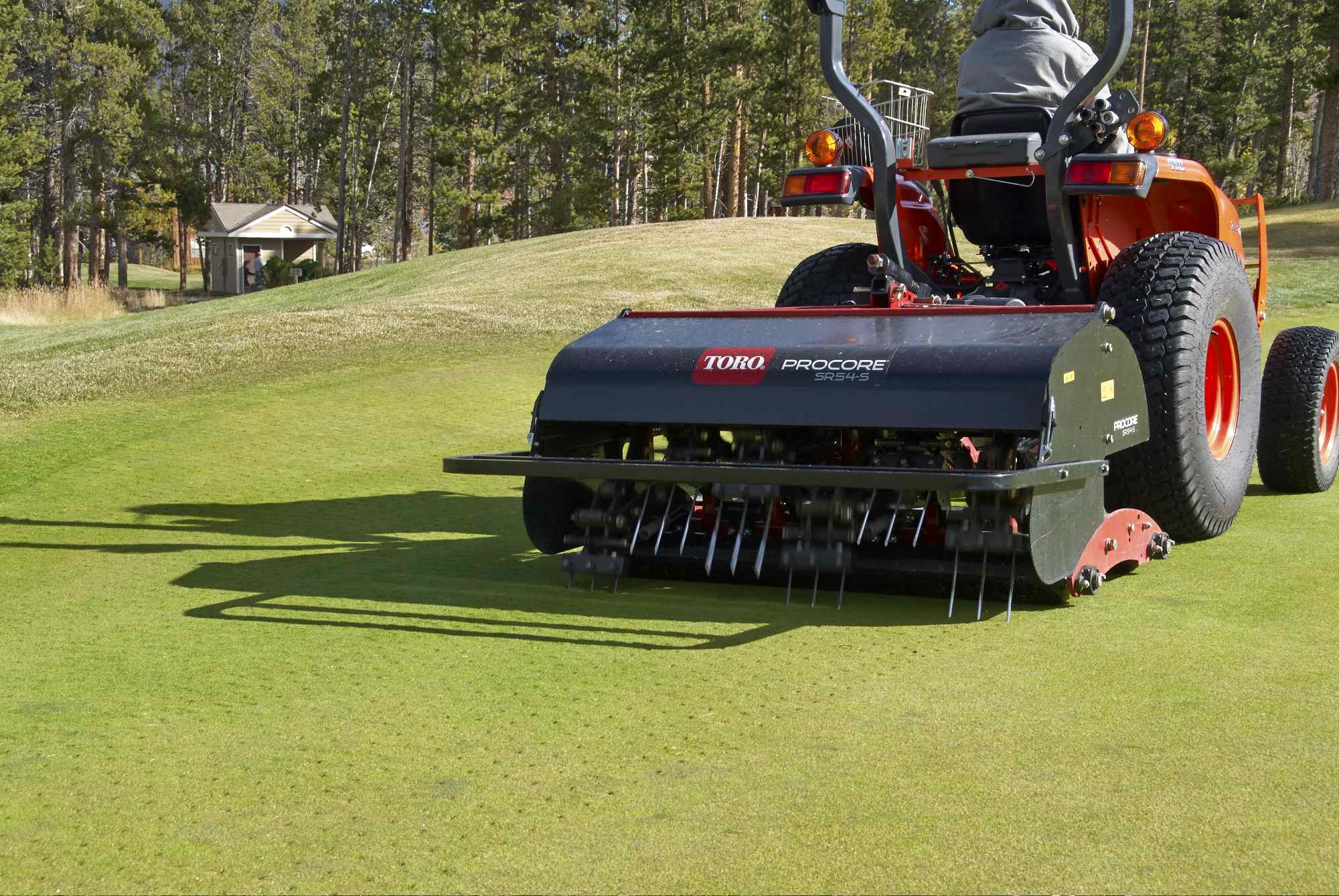
Toro ProCore SR54
Boasting a maximum aeration depth of 10in, working widths of 54in, and speeds of up to 2.5mph, this lightweight machine gives a ‘soft touch,’ leaving a smooth appearance post-aeration.
Accessories
As we all know, clearing up the cores is a chore, but there’s a way to make this task more efficient with a simple and cost-effective accessory.
With the Nordic Plow attachment for core collection, aerators achieve a quicker return to play. Designed for both golf courses and sports surfaces, this blade attachment removes the cores in one pass in minutes, reducing aeration time by half.
Reesink is here to support you and your turfcare needs
Having the right partner is crucial for turf maintenance. Reesink Turfcare – the sole distributor for Toro in the UK – offer genuine parts, aftercare support, and servicing to ensure your aerators are the best choice for your situation, promoting healthy grass growth.
Discover how Reesink can help you find the right aeration equipment by calling 01480 226800, or emailing info@reesinkturfcare.co.uk.